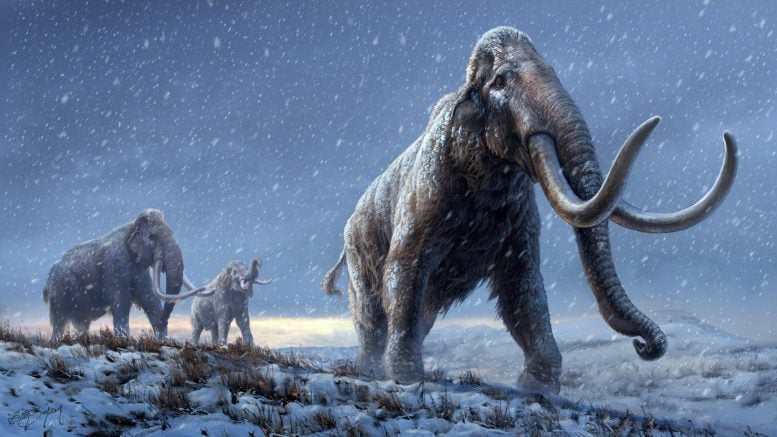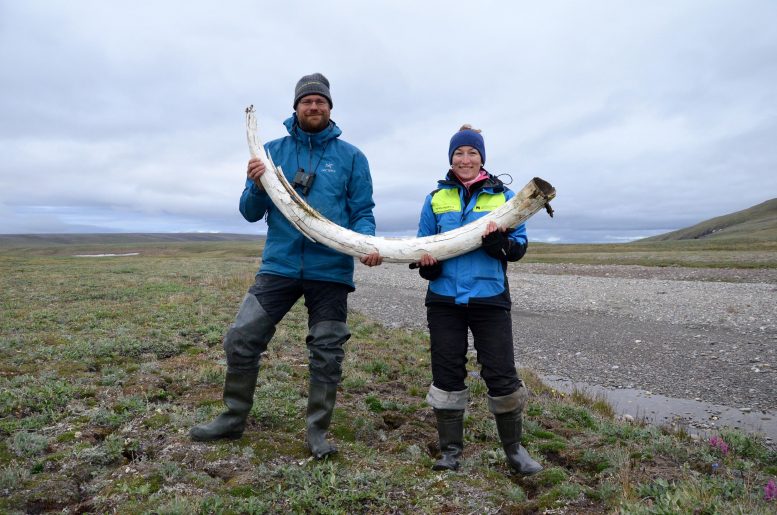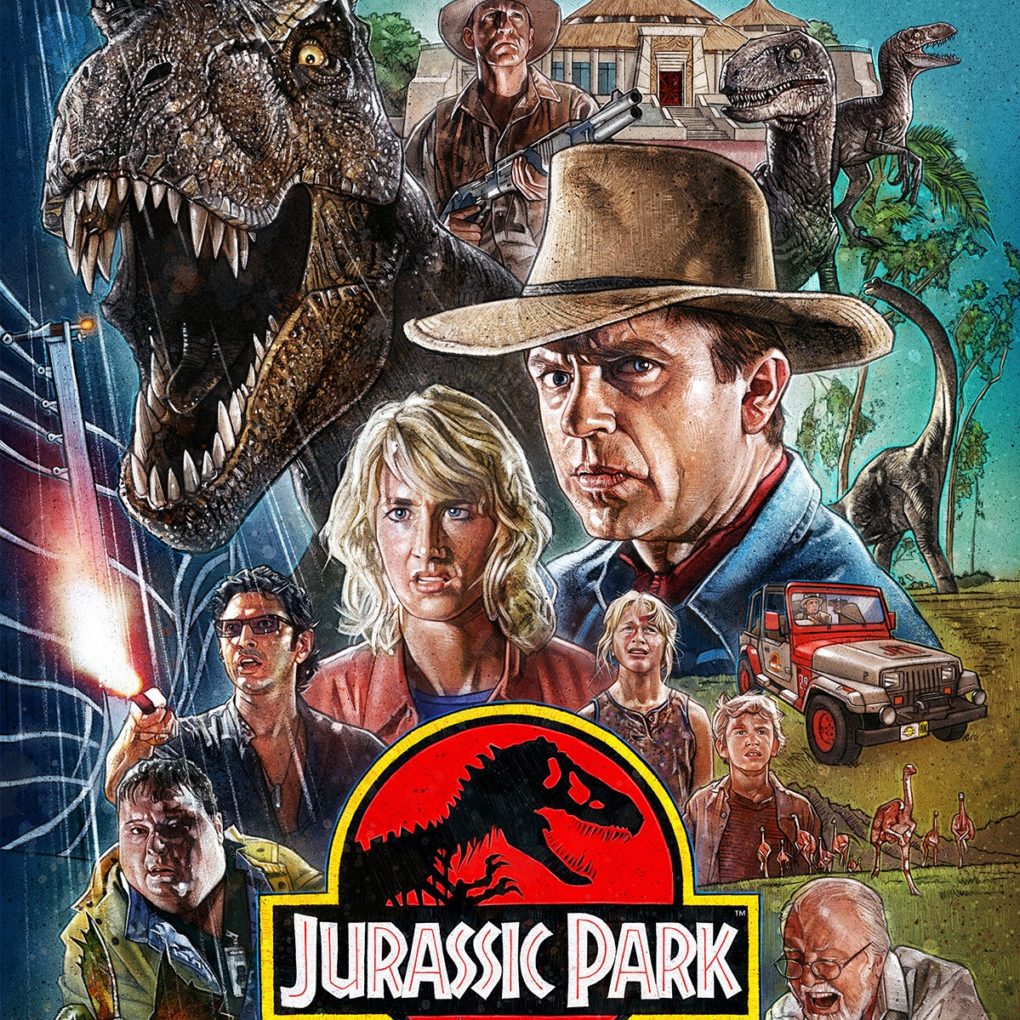
Posted on 02/19/2021 7:44:34 AM PST by Red Badger

The illustration represents a reconstruction of the steppe mammoths that preceded the woolly mammoth, based on the genetic knowledge we now have from the Adycha mammoth. Credit: Beth Zaiken/CPG
========================================================
An international team led by researchers at the Centre for Palaeogenetics in Stockholm has sequenced DNA recovered from mammoth remains that are up to 1.2 million years old. The analyses show that the Columbian mammoth that inhabited North America during the last ice age was a hybrid between the woolly mammoth and a previously unknown genetic lineage of mammoth. In addition, the study provides new insights into when and how fast mammoths became adapted to cold climate. These findings are published today (February 17, 2021) in Nature.
Around one million years ago there were no woolly or Columbian mammoths, as they had not yet evolved. This was the time of their predecessor, the ancient steppe mammoth. Researchers have now managed to analyze the genomes from three ancient mammoths, using DNA recovered from mammoth teeth that had been buried for 0.7-1.2 million years in the Siberian permafrost.
VIDEO AT LINK ..............
This is the first time that DNA has been sequenced and authenticated from million-year-old specimens, and extracting the DNA from the samples was challenging. The scientists found that only minute amounts of DNA remained in the samples and that the DNA was degraded into very small fragments.
“This DNA is incredibly old. The samples are a thousand times older than Viking remains, and even pre-date the existence of humans and Neanderthals,” says senior author Love Dalén, a Professor of evolutionary genetics at the Centre for Palaeogenetics in Stockholm.
The age of the specimens was determined using both geological data and the molecular clock. Both these types of analyses showed that two of the specimens are more than one million years old, whereas the third is roughly 700 thousand years old and represents one of the earliest known woolly mammoths.
An unexpected origin of the Columbian mammoth Analyses of the genomes showed that the oldest specimen, which was approximately 1.2 million years old, belonged to a previously unknown genetic lineage of mammoth. The researchers refer to this as the Krestovka mammoth, based on the locality where it was found. The results show that the Krestovka mammoth diverged from other Siberian mammoths more than two million years ago.
“This came as a complete surprise to us. All previous studies have indicated that there was only one species of mammoth in Siberia at that point in time, called the steppe mammoth. But our DNA analyses now show that there were two different genetic lineages, which we here refer to as the Adycha mammoth and the Krestovka mammoth. We can’t say for sure yet, but we think these may represent two different species,” says the study’s lead author Tom van der Valk.

Love Dalén and co-lead author Patrícia Pečnerová with a mammoth tusk on Wrangel Island. Credit: Gleb Danilov
===============================================================
The researchers also suggest that it was mammoths that belonged to the Krestovka lineage that colonized North America some 1.5 million years ago. In addition, the analyses show that the Columbian mammoth that inhabited North America during the last ice age, was a hybrid. Roughly half of its genome came from the Krestovka lineage and the other half from the woolly mammoth.
“This is an important discovery. It appears that the Columbian mammoth, one of the most iconic Ice Age species of North America, evolved through a hybridization that took place approximately 420 thousand years ago,” says co-lead author Patrícia Pečnerová.
Evolution and adaptation in the woolly mammoth The second million-year-old genome, from the Adycha mammoth, appears to have been ancestral to the woolly mammoth. The researchers could therefore compare its genome with the genome from one of the earliest known woolly mammoths that lived 0.7 million years ago, as well as with mammoth genomes that are only a few thousand years old. This made it possible to investigate how mammoths became adapted to a life in cold environments and to what extent these adaptations evolved during the speciation process.

Krestovka specimen tooth. Credit: CPG
The analyses showed that gene variants associated with life in the Arctic, such as hair growth, thermoregulation, fat deposits, cold tolerance and circadian rhythms, were already present in the million-year-old mammoth, long before the origin of the woolly mammoth. These results indicate that most adaptations in the mammoth lineage happened slowly and gradually over time.
“To be able to trace genetic changes across a speciation event is unique. Our analyses show that most cold adaptations were present already in the ancestor of the woolly mammoth, and we find no evidence that natural selection was faster during the speciation process,” says co-lead author David Díez-del-Molino.
Future research The new results open the door for a broad array of future studies on other species. About one million years ago was a period when many species expanded across the globe. This was also a time period of major changes in climate and sea levels, as well as the last time that Earth’s magnetic poles changed places. Because of this, the researchers think that genetic analyses on this time scale have great potential to explore a wide range of scientific questions.
“One of the big questions now is how far back in time we can go. We haven’t reached the limit yet. An educated guess would be that we could recover DNA that is two million years old, and possibly go even as far back as 2.6 million. Before that, there was no permafrost where ancient DNA could have been preserved,” says Anders Götherström, a professor in molecular archaeology and joint research leader at the Centre for Palaeogenetics.
Reference: “Million-year-old DNA sheds light on the genomic history of mammoths” by Tom van der Valk, Patrícia Pečnerová, David Díez-del-Molino, Anders Bergström, Jonas Oppenheimer, Stefanie Hartmann, Georgios Xenikoudakis, Jessica A. Thomas, Marianne Dehasque, Ekin Sağlıcan, Fatma Rabia Fidan, Ian Barnes, Shanlin Liu, Mehmet Somel, Peter D. Heintzman, Pavel Nikolskiy, Beth Shapiro, Pontus Skoglund, Michael Hofreiter, Adrian M. Lister, Anders Götherström and Love Dalén, 17 February 2021, Nature. DOI: 10.1038/s41586-021-03224-9
The study is the result of an international collaboration that has involved 22 scientists from nine countries. In addition to researchers from the Centre for Palaeogenetics, a joint research centre funded by Stockholm University and the Swedish Museum of Natural History, the study also includes researchers from the Russian Academy of Sciences, the Natural History Museum and The Crick Institute in the United Kingdom, UC Santa Cruz in the USA, Potsdam University in Germany, China Agricultural University, the Middle East Technical University in Turkey, the Arctic University of Norway, and the University of Copenhagen in Denmark.
Sequence enough fragments . . .
No way any DNA should last 1.2 Million years
In my best Homer Simpson voice: mmmmmmmm, mammoth burgers!
The more they find, the less they actually know. So goes the study of Anthropology...
No permafrost? Global warming from Fred Flintstone's SUV, no doubt!
I thought that the Erf went thru many cycles of freeze then fry during those millions of years..................
I saw those three woolly mammoths pass the house just yesterday.
COVID genome

Disclaimer: Opinions posted on Free Republic are those of the individual posters and do not necessarily represent the opinion of Free Republic or its management. All materials posted herein are protected by copyright law and the exemption for fair use of copyrighted works.